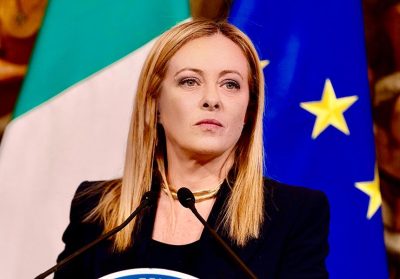Regarding Italy’s Proposed Parallel Currency: What If It Was Backed By Gold?
by Mish Shedlock, The Maven:

As noted earlier today, a Five Star / Lega Coalition is in the works in Italy.
The parties are eurosceptic to varying degrees. Part of their platform includes a Parallel Currency.
Heck, why not back it with gold?
After all, the bank of Italy has the third largest gold reserves in the world after the US and Germany.
Banca d’Italia’s Mammoth Gold Reserves
The BullionStar discusses Banca d’Italia’s Mammoth Gold Reserves.
Italy’s gold has had an eventful history. Robbed by the Nazis and taken to Berlin. Loaded on to gold trains and sent to Switzerland. Flown from London to Milan and Rome. Used as super-sized collateral for gold backed loans from West Germany while sitting quietly in a vault in New York. Leveraged as a springboard to prepare for Euro membership entry. Inspired Italian senators to visit the Palazzo Koch in Rome. Half of it is now in permanent residency in downtown Manhattan, or is it? Even Mario Draghi, European Central Bank (ECB) president, has a view on Italy’s gold. The below commentary tries to make sense of it all by bringing together pieces of the Italian gold jigsaw that I have collected.
According to officially reported gold holdings, and excluding the gold holdings of the International Monetary Fund (IMF), Italy’s central bank, the Banca d’Italia, which holds Italy’s gold reserves, is ranked as the world’s third largest official holder of gold after the US and Germany, with total gold holdings of 2,451.8 tonnes, worth more than US$ 105 billion at current market prices. Notable, Italy’s gold is owned by the Banca d’Italia, and not owned by the Italian State. This contrasts to most European nations where the gold reserves are owned by the state and are merely held and managed by that country’s respective central bank under an official mandate.
Palazzo Koch
In its Palazza Koch vaults in Rome, the Banca d’Italia claims to store 1199.4 tonnes of gold. Of this total, 1195.3 tonnes are in the form of gold bars (represented by 95,493 bars), and 4.1 tonnes are in the form of gold coins (represented by 871,713 coins). While most of the bars in Rome are prism-shaped (trapezoidal), there are also brick-shaped bars with rounded corners (made by the US Mint’s New York Assay Office) and also ‘panetto’ (loaf-shaped) ‘English’ bars. The average weight of the bars in Palazzo Koch is 12.5 kg (400 oz), with bar weights ranging from relatively small 4.2 kgs up to some very large 19.7 kgs bars. The average fineness / gold purity of the Rome stored bars is 996.2 fine, with some of the holdings being 999.99 fine bars.
The Banca d’Italia also states that 141 tonnes of gold that it transferred to the ECB in 1999 as a requirement for membership of the Euro is also stored in Palazzo Koch. This would put the total gold holdings in the Palazzo Koch vaults at 1340 tonnes. Gold transferred to the ECB by its Euro member central banks is managed by the ECB on a decentralised basis, and is held by the ECB in whatever location it was stored in when the initial transfers occurred, subject to various location swaps which may have taken place since 1999.



